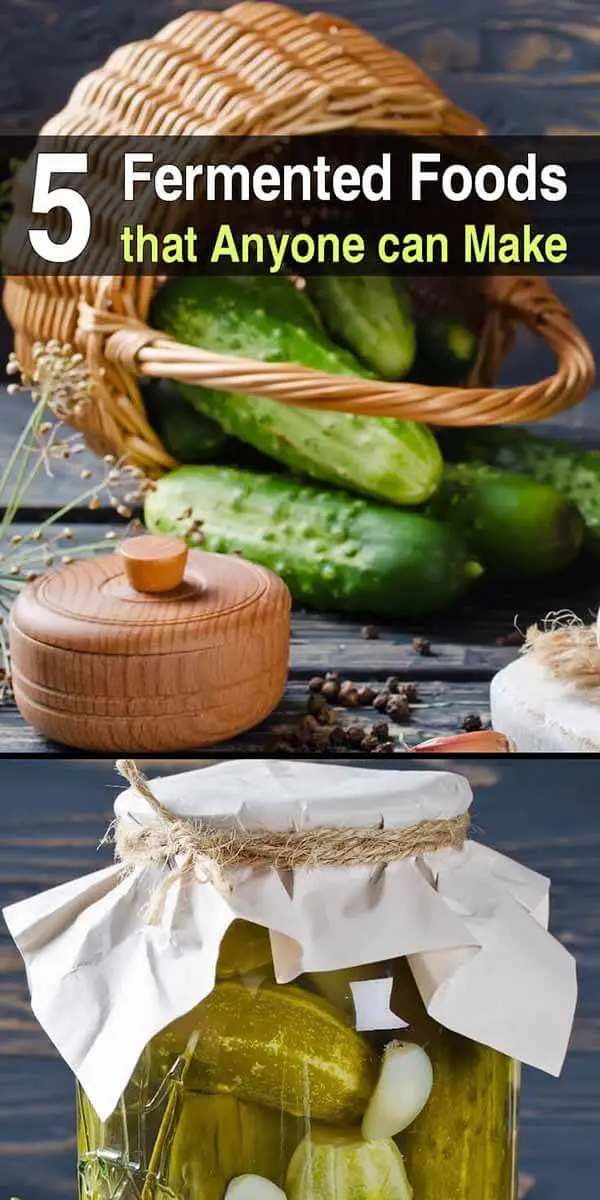Estimated reading time: 6 minutes

Beyond the microbrewery, a growing number of households are using fermentation techniques that preserve fruits and vegetables all year long, without the use of electricity. Long before the advent of refrigeration, ancient food preservation techniques, one being fermentation, were utilized to make fruits and vegetables safe for consumption, long after the growing season had ended. It is still used by many cultures today to produce crunchy pickles, tangy fruit chutneys, and zesty sauerkrauts.
Fermenting produce, instead of canning or freezing it, has several benefits. For those living off the grid, fermentation requires no electricity at any stage of the process. This saves valuable freezer space and is helpful for those facing prolonged outages in which they could lose a freezer full of produce.
Secondly, these foods provide several health benefits. Fermented fruits and vegetables are widely known as superfoods, supplying an array of healthy bacteria and enzymes, and enhancing the bioavailability of vitamins and micronutrients.
Consuming small amounts of fermented fruits and vegetables each day allows the body to better regulate the digestive system by introducing probiotics and important enzymes that aid the assimilation of nutrients.
Not to be confused with commercially manufactured pickles or sauerkraut, fermented fruits and vegetables are not produced with vinegar, but rely on naturally occurring lactobacilli to break down the starches and sugars.
Essentially, fermentation is a metabolic process that converts the starches and sugars found naturally in vegetables and fruits into food preserving alcohols and gasses, which hinders the growth of harmful bacteria while encouraging the reproduction of beneficial bacteria and enzymes.
Vinegar solutions commonly used for pickling are very acidic and must be pasteurized to ensure they are free of harmful bacteria, negating any benefit from producing or consuming them.
Choose a few recipes to get started fermenting your own produce. This is an artisanal craft: every batch should be small to ensure it is made correctly. There are many types of containers that are suitable for fermenting vegetables. Regular glass jars can be used, as well as specially designed ceramic crocks with airtight lids.
Plastic containers can be used as well, but even tiny scratches on the interior can harbor unwanted bacteria, thus ruining the final product.
The containers can be covered in multiple ways, each requiring a different amount of attention to the jars once the fermentation process has begun. Specially designed lids are available that are both airtight and self-burping, releasing excess gasses through a vent incorporated in the lid. Regular canning lids are sufficient, provided you release the excess gas or burp the jars every day.
Failure to do so will result in exploding jars and ruined produce. Using coffee filters and rings is another option that eliminates the need to burp the jars. However, this method has the highest risk of contamination, requiring daily attention to check for the formation of mold due to overexposure to oxygen.
A pickle packer may be necessary to release the juices of the chosen vegetables and fruits. Made of any material, care must be used to not damage the interior of the container.
Fermentation weights may be necessary in some cases to ensure the produce is completely submerged. Virtually any uncoated object can be used as a weight, so long as it is clean and free of scratches. Glass and ceramic weights are most popular and widely available, though something as simple as a small glass jar filled with water is sufficient.
Finally, choose high-quality sea salt, a starter culture, and a source of unpasteurized whey to create the foundation of most recipes found below. The length of time needed for any recipe to mature varies, as does the amount of time the food can safely be stored.
Small white flecks are not a concern, but a type of yeast that can be safely scooped off the surface. Fermented produce that has truly spoiled will be easily recognized by smell.
5 Fermented Foods Anyone Can Make
1. Sauerkraut – Europeans have been creating variations of sauerkraut for generations. The main ingredient of any sauerkraut recipe is shredded cabbage; however, other ingredients can be added before and after the fermentation process to create many unique side dishes.
Traditional sauerkraut can be consumed in as little as six days, but it will keep for six to eight months or more when stored in a cool, dark area.
2. Pickled Cucumbers – Next to sauerkraut, pickled cucumbers are the most common fermented, or pickled, vegetable. Unlike the vinegar brine used in commercially produced pickles, lacto-fermented pickles are crunchy with a sour, yet less salty taste.
3. Kimchi – Korean cuisine includes a similar, yet more colorful use of cabbage known as Kimchi. Kimchi contains cabbage, onion, carrot and ginger pieces, creating a tangy condiment that is served at every Korean meal. There are many variations including a few that are served fresh before the fermentation process has begun.
4. Beets – Fermented beets are a mainstay of Russian cuisine, where they use the beet roots not only for a side dish, but also to create a refreshing and nutritious drink. Fermented beets can have a variety of ingredients added before the process begins to enhance their flavor. Beet kvass is a fermented drink prepared with beets that can also be used in place of vinegar in salad dressings and in soups.
5. Chutney – Adding a chutney to the menu is an increasingly popular way to dress up a plain meal. Created in India, they remain a staple of Indian cuisine, adding not only flavor, but also vital nutrients lacking in many diets today.
Fruits of all kinds can be use alone, as in this cinnamon apple chutney, or combined to make creative dishes such as this strawberry and jalapeno one. Chutneys are great ways to use up those few extra pieces of fruit left over from a bountiful harvest.
In addition to these, there are many traditional condiments that can be fermented such as ketchup, barbeque sauce, salad dressings and relishes. The small batches required for most fermenting recipes allow you to compost less of your harvest and experiment more, as even watermelon rinds can be made into tangy pickles when preserved by lacto-fermentation.












Pickled eggs and pickled sausages are great as well.
yuck.
I’ve never actually made a chutney before! Everything else you listed is a staple of my fermented list of veggies. Thank you for sharing! I’ll definitely have to try and make a chutney next time I take the plunge and ferment some goodies!
Does anyone have a Super Easy recipe for making Kraut? Back in the 70s my dad told me how he and his young bride got smowed in in a cabin on some land they were going to homestead. He said they had made a barrel of kraut and that was all the food they had to eat after they quickly ran out of fresh food. But they survived. We made kraut in a 5 gallon bucket by cutting up the cabbage and layering it with salt. Then we put the bucket in the storeroom.
I am 77 and cannot remember the rest of what we dud or how long each step took. I canned it after it was ready. It was the Best kraut i have tasted. My dad died in 1979 and i lost the recipe and directions after that.
Does anyone know how to make kraut like we did. If you do please share it. Im having hard time affording preps . It will definitely get you through tough times. Thanks!